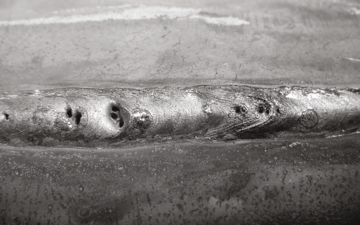Discover What is Porosity in Welding and Its Effect on Structural Stability
Discover What is Porosity in Welding and Its Effect on Structural Stability
Blog Article
Recognizing Porosity in Welding: Checking Out Causes, Effects, and Prevention Strategies
As professionals in the welding sector are well aware, understanding the causes, effects, and avoidance strategies associated to porosity is important for attaining durable and trusted welds. By diving into the root causes of porosity, analyzing its harmful effects on weld high quality, and discovering efficient avoidance strategies, welders can enhance their knowledge and skills to generate high-quality welds consistently.
Common Root Causes Of Porosity
Porosity in welding is largely triggered by a combination of factors such as contamination, incorrect protecting, and insufficient gas coverage throughout the welding process. Contamination, in the type of dust, oil, or rust on the welding surface area, develops gas pockets when heated, leading to porosity in the weld. Incorrect shielding takes place when the securing gas, generally used in processes like MIG and TIG welding, is unable to fully shield the molten weld pool from responding with the bordering air, resulting in gas entrapment and succeeding porosity. Furthermore, poor gas coverage, often due to wrong flow prices or nozzle positioning, can leave parts of the weld unsafe, allowing porosity to develop. These elements collectively contribute to the development of spaces within the weld, deteriorating its honesty and potentially triggering architectural concerns. Understanding and addressing these typical reasons are vital actions in stopping porosity and ensuring the high quality and stamina of bonded joints.
Effects on Weld Quality
The existence of porosity in a weld can considerably endanger the overall high quality and honesty of the bonded joint. Porosity within a weld produces voids or tooth cavities that damage the framework, making it extra vulnerable to fracturing, rust, and mechanical failing. These spaces act as tension concentrators, reducing the load-bearing capability of the weld and boosting the likelihood of premature failing under used tension. Additionally, porosity can also serve as potential sites for hydrogen entrapment, additional exacerbating the degradation of the weld's mechanical properties.
In addition, porosity can prevent the efficiency of non-destructive testing (NDT) methods, making it testing to spot other defects or suspensions within the weld. This can result in considerable safety concerns, specifically in vital applications where the architectural integrity of the bonded parts is critical.

Avoidance Techniques Overview
Provided the damaging effect of porosity on weld top quality, effective prevention strategies are important to preserving the structural stability of bonded joints. Furthermore, selecting the suitable welding parameters, such as voltage, current, and travel rate, can aid lessen the danger of porosity development. By integrating these prevention methods right into welding techniques, the incident of porosity can be dramatically reduced, leading to stronger and a lot more reliable welded joints.
Importance of Correct Protecting
Correct securing in welding plays an essential role in avoiding atmospheric contamination and ensuring the stability of bonded joints. Shielding gases, click for more such as argon, helium, or a mixture of both, are frequently made use of to safeguard the weld swimming pool from reacting with aspects in the air like oxygen and nitrogen. When these reactive aspects come into contact with the hot weld pool, they can create porosity, bring about weak welds with decreased mechanical homes.

Poor securing can result in numerous flaws like porosity, spatter, and oxidation, compromising the structural honesty of the welded joint. Sticking to proper protecting practices is essential to produce top notch welds with very little issues and guarantee the long life and dependability of the bonded components.
Monitoring and Control Approaches
How can welders properly keep an eye on and manage the welding procedure to ensure ideal results and prevent problems like porosity? By continuously monitoring these variables, welders can recognize deviations from the suitable conditions and make immediate modifications to prevent porosity formation.

Additionally, carrying out appropriate training programs for welders is important for checking and regulating the welding procedure successfully. What is Porosity. Enlightening welders on the value of maintaining regular criteria, such as appropriate gas securing and take a trip speed, can help prevent porosity concerns. Routine analyses and qualifications can likewise ensure that welders are skilled in surveillance and managing welding procedures
In addition, the usage of automated welding systems can improve great post to read surveillance and control capabilities. These systems can precisely regulate welding criteria, decreasing the probability of human error and ensuring consistent weld quality. By combining innovative surveillance modern technologies, training programs, and automated systems, welders can efficiently keep track of and control the welding process to reduce porosity problems and attain high-grade welds.
Conclusion

Report this page